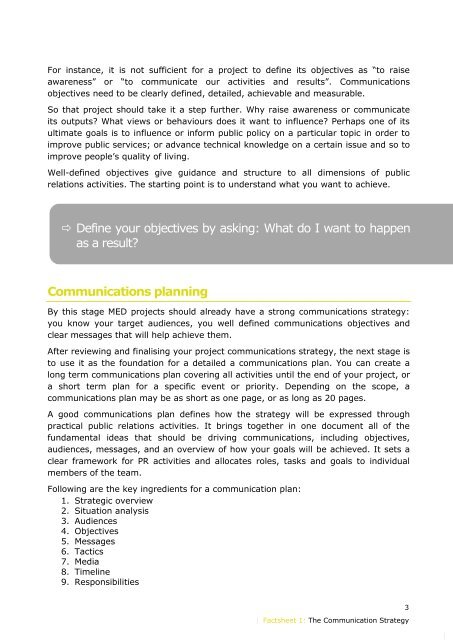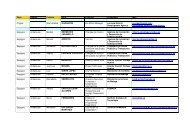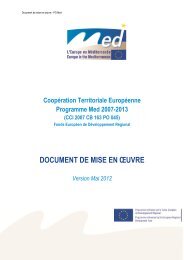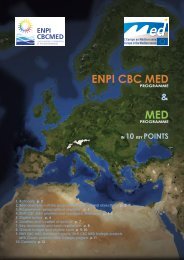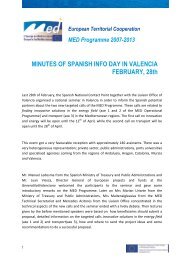MED Communication Handbook - Programme Med
MED Communication Handbook - Programme Med
MED Communication Handbook - Programme Med
You also want an ePaper? Increase the reach of your titles
YUMPU automatically turns print PDFs into web optimized ePapers that Google loves.
For instance, it is not sufficient for a project to define its objectives as “to raise<br />
awareness” or “to communicate our activities and results”. <strong>Communication</strong>s<br />
objectives need to be clearly defined, detailed, achievable and measurable.<br />
So that project should take it a step further. Why raise awareness or communicate<br />
its outputs? What views or behaviours does it want to influence? Perhaps one of its<br />
ultimate goals is to influence or inform public policy on a particular topic in order to<br />
improve public services; or advance technical knowledge on a certain issue and so to<br />
improve people’s quality of living.<br />
Well-defined objectives give guidance and structure to all dimensions of public<br />
relations activities. The starting point is to understand what you want to achieve.<br />
� Define your objectives by asking: What do I want to happen<br />
as a result?<br />
<strong>Communication</strong>s planning<br />
By this stage <strong>MED</strong> projects should already have a strong communications strategy:<br />
you know your target audiences, you well defined communications objectives and<br />
clear messages that will help achieve them.<br />
After reviewing and finalising your project communications strategy, the next stage is<br />
to use it as the foundation for a detailed a communications plan. You can create a<br />
long term communications plan covering all activities until the end of your project, or<br />
a short term plan for a specific event or priority. Depending on the scope, a<br />
communications plan may be as short as one page, or as long as 20 pages.<br />
A good communications plan defines how the strategy will be expressed through<br />
practical public relations activities. It brings together in one document all of the<br />
fundamental ideas that should be driving communications, including objectives,<br />
audiences, messages, and an overview of how your goals will be achieved. It sets a<br />
clear framework for PR activities and allocates roles, tasks and goals to individual<br />
members of the team.<br />
Following are the key ingredients for a communication plan:<br />
1. Strategic overview<br />
2. Situation analysis<br />
3. Audiences<br />
4. Objectives<br />
5. Messages<br />
6. Tactics<br />
7. <strong>Med</strong>ia<br />
8. Timeline<br />
9. Responsibilities<br />
� Factsheet 1: The <strong>Communication</strong> Strategy<br />
3<br />
�


